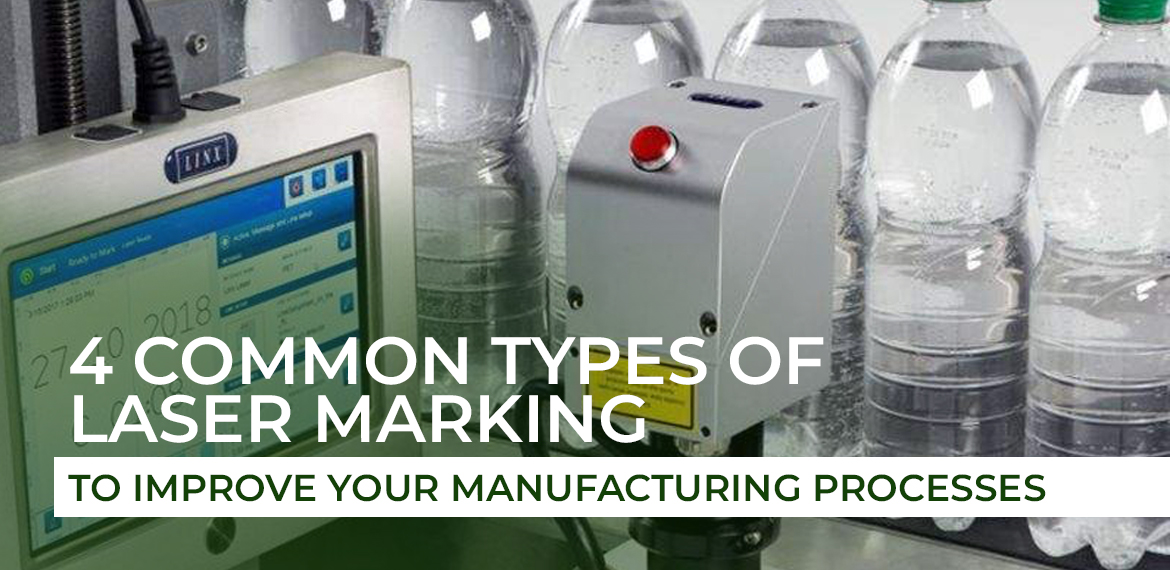Laser marking is a reliable and cost-efficient marking method. It is versatile so you can make the most of your investment. While its benefits are undeniable, you have to be familiar with the different types of laser marking systems available to know the right machine that is most suited to your requirements.
If you consider integrating laser marking systems into your manufacturing processes, here’s a basic guide that discusses the 4 types of laser marking machines that you need to know.
4 Common Types of Laser Marking
1. Annealing Laser Marking
Ideal for the medical industry
This laser marking involves an oxidation process wherein heat is applied to a surface without the need for a high amount of aggression. Through this, a solid mark with a smooth finish is achieved. While black is a common mark produced through oxidation, other colors between the shades of yellow, red, and green may be produced depending on the surface temperature.
Annealing laser marking involves a slow process as it relies on heat to allow the carbon from the metal to the surface. Time must also be allotted to cool it gradually after being heated.
2. Carbon Migration Laser Marking
Ideal for Aerospace, Jewelry engraving, and metalwork
The second type of laser marking is carbon migration. This process involves the application of heat to metal and metal alloys. Once heated, it results in the chemical bonding of the metal to its carbon molecules. Once carbon properties reach the surface, it results in a dark laser marking.
As compared to annealing, carbon laser marking gives off a high amount of heat to a smaller area at a rapid pace.
3. Foaming Laser Marking
Ideal for plastic materials such as cosmetics, keyboards, and ink cartridge
Unlike annealing and carbon laser marking, foaming laser marking is used on plastics instead of metals. It produces smooth and light marking through the creation of foam and gas bubbles which change the light refraction properties of the material.
Preferrably, foaming laser marking is used for dark plastics with lighter colors as the desired end result.
4. Coloration Laser Marking
Ideal for jewelry, bottle cap, and ear tag markings
A versatile type of laser marking, coloration is suited for metals and plastic materials. Coloration laser marking involves a process wherein color is added to a plastic or metal by heating specific parts of a surface according to desired results.
Coloration in plastic materials is done through a foaming process. On the other hand, oxidation is involved in metal coloration. It is also important to note that surface modification is done by controlling the pulse frequency, width, and other aspects that affect the colors and shades. It is important to identify the desired colors before the process is started.
Advantages of Using Laser Marking
- Promote brand protection
- Work with a range of surfaces/materials
- Prevent product counterfeits
- Versatile uses
- Quality results
Create permanent marks on various materials through laser marking.
With laser marking, the surface of the substrate undergoes permanent changes. When dealing with painted cards, the topmost layers are removed to expose what’s underneath them. For plastics, laser markings change the chemical nature of the material either by melting or color change. For glass marking, microcracks are created which allow the inscription of permanent codes without losing the strength of the material.
ALSO READ: Tips for Buying a Batch Coding Machine for Your Business
Gain a better understanding of the most common types of laser marking to identify the machine that best meets your manufacturing requirements.
Explore your options. Elixir offers a wide range of Linx laser marking systems. Feel free to send us a message to know the range of support that we offer for various applications and speeds.

